Video Marketing Strategy: 3 Paradigm Shifts for Turning Videos into Sales

- By Warren Thompson
- 7 min read

It happened again, didn’t it…
You created a new shiny marketing video for your website and social media followers; A video that finally showed how awesome you and your team are, and how unique you are from your competitors.
…and then you got a few hundred likes and views,
…and then your friends and family told you how much they like it,
…and then, after a few weeks… *poof*… it fizzled out…
Now looking back on it, you ask yourself with some uncertainty “Hmm, I wonder how much business we got from that? Was it worth all the money we spent?”.
You’re not quite sure but you reassure yourself, “Well it must’ve been worth it because we got all of those views and likes, and people obviously seemed to like it! Right?”.
So you go back to your team and say “We need to do another video!”
…and so the cycle repeats itself, over and over again.
All the while, you end up blowing 95% of your video marketing budget creating video after video, for a relatively small amount of unqualified people, all the while not knowing the true ROI of your investment.
If that sounds familiar you’re not alone…
In fact, 85% of businesses use video as a marketing tool — up from 61% in 2016. But video creation alone doesn’t get you customers, DISTRIBUTION does.
Each of the following principles is supported by a paradigm shift in the way that you approach your video marketing strategy. These principles are more geared towards video advertising than educational or informational content because of today’s “pay to play” environment, but the same principles can apply to non-advertised video content to make them more effective.
As illustrated in the example above, when most companies set out to start using video marketing, they place most of their focus on video creation. This is an important first step as you want to create a video that properly represents your brand and tells your story.
However, the common pitfall for most businesses is that they try to create ‘one big video to do it all’, without first planning out what their distribution strategy is for their videos — important questions like:
It’s tantamount to the “if you build it, they will come” mindset, but unfortunately, online video doesn’t work that way.
In fact, as of late 2019, brands can now only reasonably expect their posts to be seen by just 5.5% of their own Page’s followers without an additional promotional budget.
If you spent $5000 creating your last video and $500 promoting it, you were following a 95:5 creation to distribution ratio.
My recommendation is to aim for a 20:80 creation to distribution ratio. That means that you should spend 4x as much budget on distribution as you do on creation. Crazy right!
Why do I recommend this? Because creation takes TIME. A lot of time in fact. Usually when businesses measure the cost of video creation, they conveniently leave off the hours of paid work that went into concepting, script approvals, table reading, practicing, location scouting, deliberating, shooting, reviewing and revising within their own internal team.
Furthermore, video assets are ONLY assets if they generate income for your business, otherwise, they are liabilities as they become less and less relevant and lose value over time. Cue the Robert Kiyosaki Rich Dad mini-lesson:
This is the cache-flow pattern of an asset:
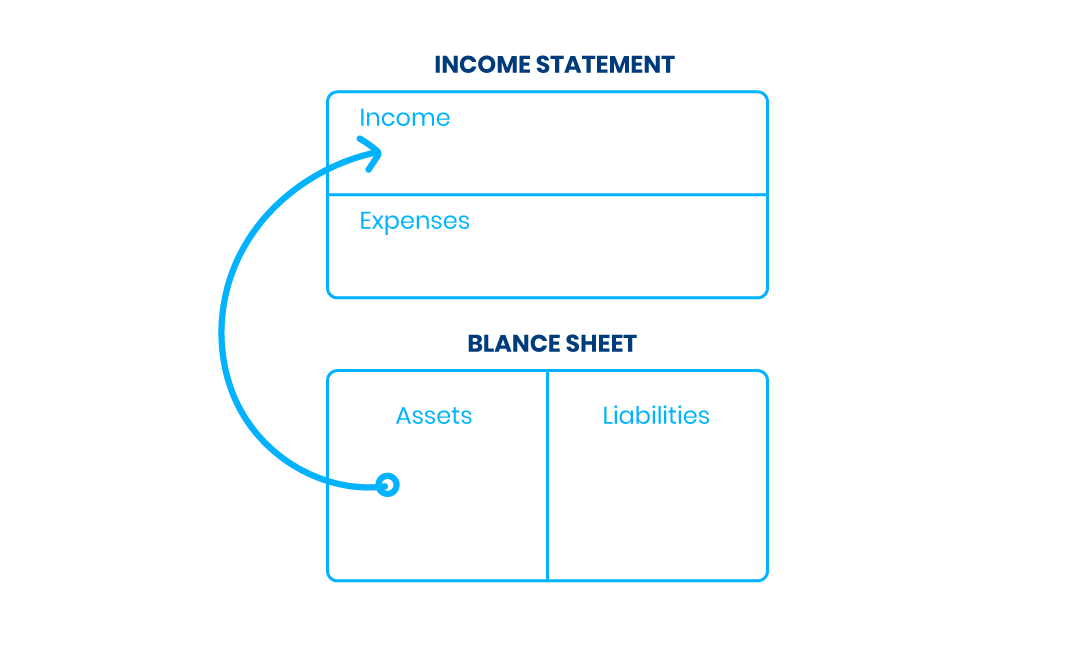
In the wise words of Stephen Covey, ”Begin with the end in mind”.
When most businesses set out to create a marketing video or videos, they’re usually so wrapped up in the messaging and creative of the video that they forget to think about where their videos will be seen (“on Facebook” doesn’t count).
This typically leads back to our common pitfall of creating ‘one big video to do it all’ and then having to cut it up into smaller versions to “fit” into the individual Youtube & Facebook video placement option.
Although this may seem like an economical way to do things, it often ends up fracturing the core message of the video into bite-sized clips that don’t deliver enough impact on their own to be effective.
It’s like taking the mona lisa and tearing it into neat little sections and hoping that people will be able to understand the whole picture from seeing only a small snippet…
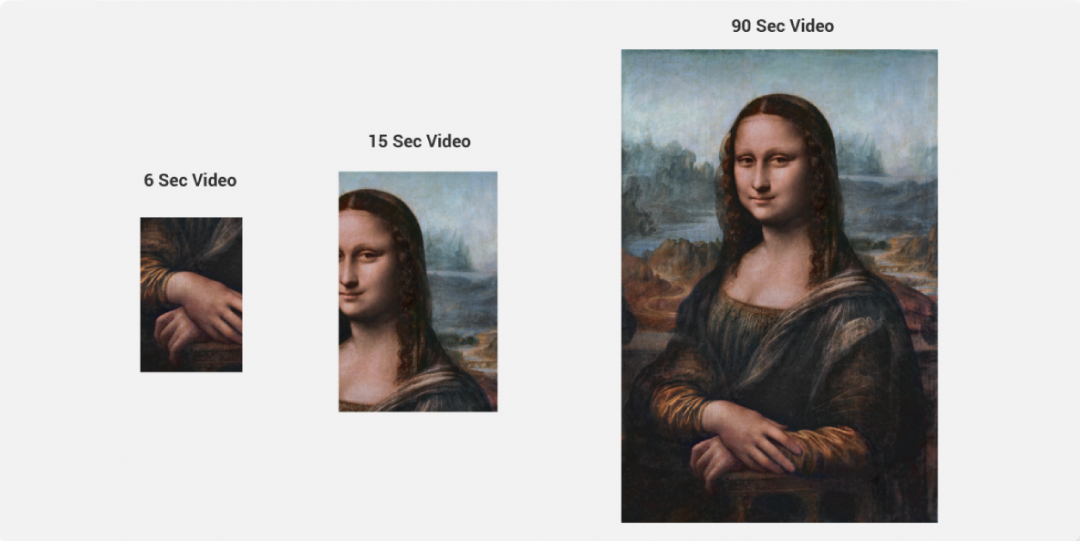
…versus creating miniature Mona Lisa’s that give you a smaller, but complete picture at each step.
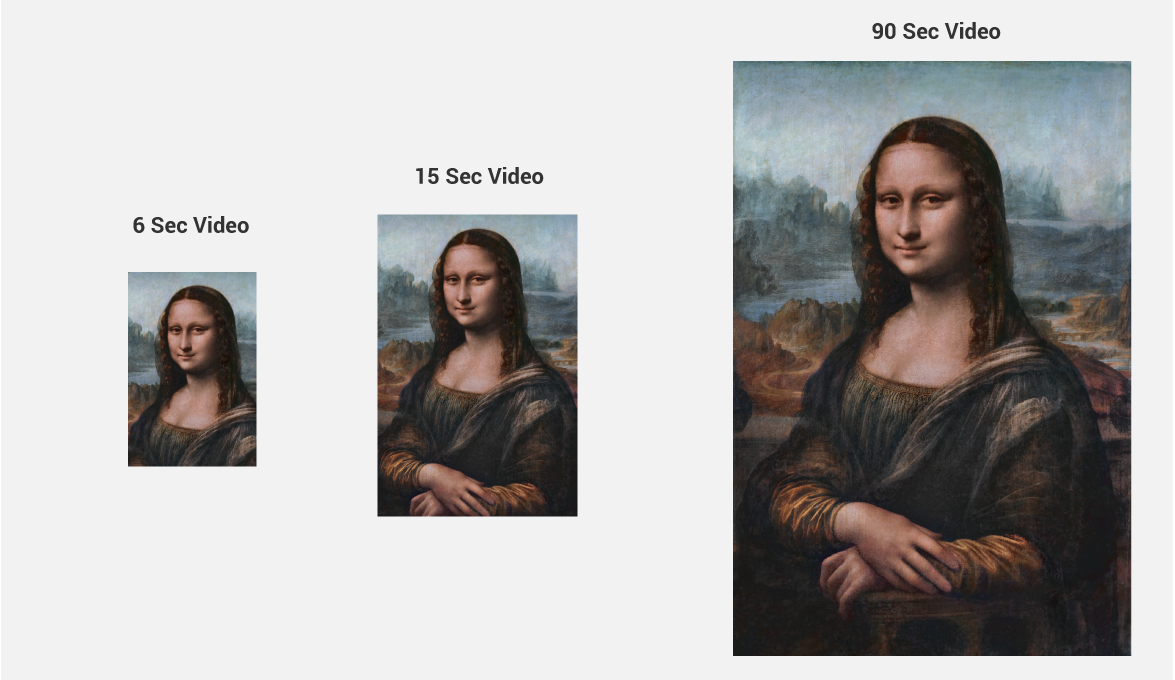
With online platforms like Facebook and Youtube, your shorter videos (between 5-15 secs) will be eligible for many more ad inventory placements, so they will be seen by a MUCH larger percentage of your intended audience than the full-length video you originally conceptualized.
What’s more, the ‘completion rate’ of shorter videos is significantly higher than lengthier ones, especially for the 65% of people viewing on a mobile device, so you’ll be more likely to successfully share the entire message of your video if you plan ahead for shorter placements.
Sheryl Sandberg, Facebook’s COO, also stated that videos as short as 6 seconds lead to “higher brand metrics across the board” versus their longer counterparts, echoing the move to shorter, snappier videos and video ads.
All of this adds up to placing a focus on your short videos first and then working up.
With your next video marketing project, ask yourself these questions in order:
To drive this home, when the argument of ‘one big video to do it all’ vs. multiple shorter videos comes up at your next team meeting, just share the graph below:
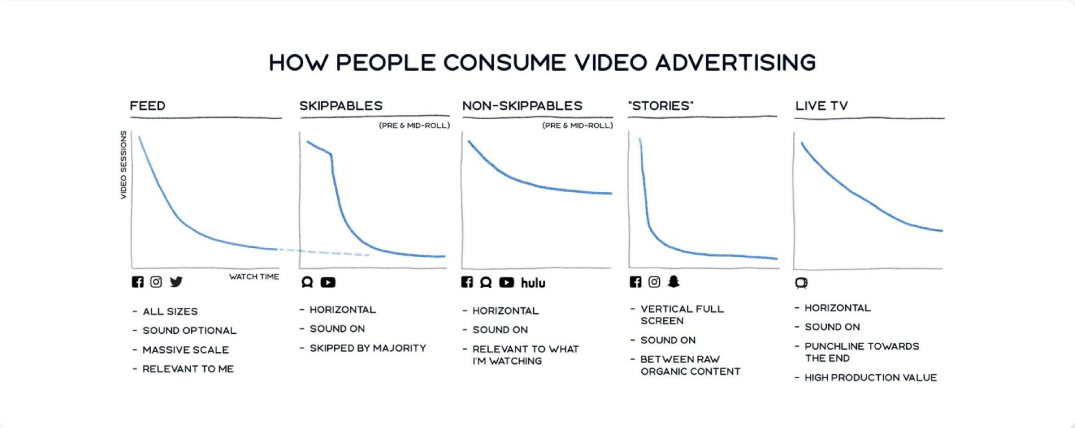
Source: Facebook Business
The longer video that you desperately want people to see won’t be seen for more than 5-10 seconds anyway, so you may as well get the full message in before the viewer skips or scrolls past.
Strategy A

VS
Strategy B

If you use Strategy A, you’ll have a dismal conversion rate! (Even if you consider yourself an ideal catch.) And you’ll also leave a negative, irreparable first impression.
However…
If you first introduce yourself, build a little rapport, and offer to buy that person a drink, then your chances will be much better at continuing to develop the relationship.
It‘s not rocket science, and you don’t have to use click-baity messages like “99 Video Marketing Secrets That’ll Earn You $1000’s!”. It’s just applying an understanding of human nature.
Every interaction with your potential customers creates a small, subconscious cost vs. benefit comparison in their minds.
Your job is to ensure that the benefits outway the costs at each interaction, or they will opt-out or worse, start to resent you..
You might say to yourself: “Yeah, but they’re just watching a video. What are the costs?”
Here are just a few to consider:
So, when you are designing your video marketing strategy, think about which stage of the customer journey your audience is in and design the appropriate video and “ask” (or call-to-action) for that stage.
Here is a simple guide to get you started, but like all simple guides, there are plenty of opportunities to stretch outside of this:
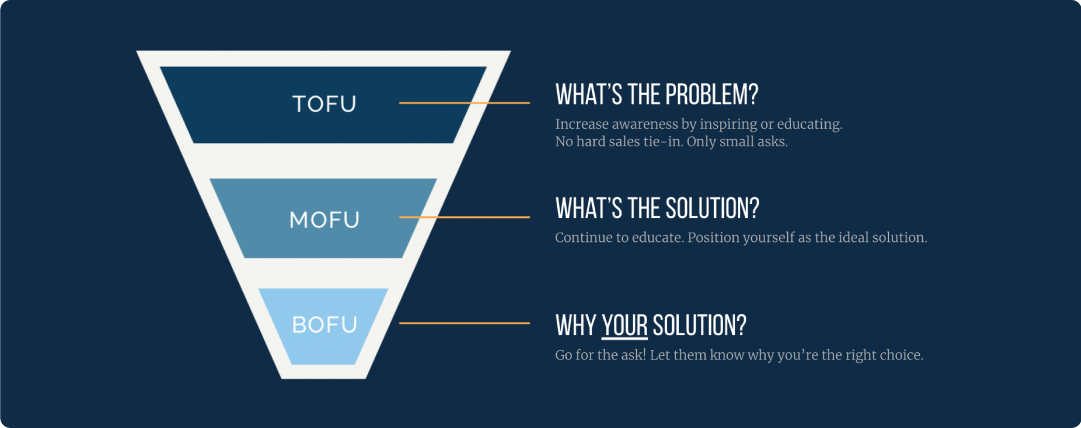
Identify the problem and introduce yourself (maybe using a logo), but without a hard sales tie-in. These videos can be thought of as the “why” videos. On the flipside, you can also use these videos to speak to the aspirational identity of your viewers and create an alignment of beliefs.
A 15 sec video that showcases a common problem that your customers experience and why it happens.
A link to a blog article which helps the viewer better understand their problem (giving more value than you take).
In July 2020, we helped a client in the home services industry to use a 6 second video to drive a record number of webinar attendees with a budget of only $300.
Here you want to educate your audience further about the specifics of the solution or process to help solve their problem. These are the “how” videos of your unique offering.
You want to start positioning yourself as the ideal solution and may or may not want to go for the hard sales ask at this point depending on your product or service.
A 15 sec video that dispels a common misconception in your industry and how the solution you offer will help them.
A link to a landing page that shows a list of features and benefits of your solution, your process, and answers potential objections to the sale.
In April 2020, we helped a client in the nutrition space to use a 10 second video to educate past customers and encourage trial of a new free delivery service due to the COVID-19 pandemic.
Here you want to go for the ask and let the customer know why you’re the right choice. They likely already know that they want this solution and may be comparison shopping, so here’s your chance to help them choose you.
A 30 sec video of a happy customer who’s experienced the full benefits of your product or services and wants to share their story.
A link to a landing page that showcases customer testimonials, a limited time offer, and money-back guarantees to make them feel confident in their decision.
In July 2020, we helped a client in higher education to use 15 & 60 second videos on Youtube, Facebook & Instagram to generate last minute student applications for a program that was struggling.
With smaller, impulse purchases, you may be able to skip a step because the overall cost is lower, but with larger purchases or longer sales cycles you’ll want to work on your messaging so that you demonstrate your understanding of their needs and can gain their commitment at each stage detailed above.
To conclude, online video marketing isn’t the same as just running TV ads online. Our behaviours, expectations, technology and context are vastly different than the days of traditional television.
More importantly, our ability to measure each step of the customer journey and create a sequenced conversation allows businesses to create smarter video campaigns instead of relying on shock tactics to get the attention of their target audience.
Before creating your next marketing video, remember these principles and paradigm shifts.
At Ollo Metrics, we help our clients hone and test their messaging, measure their entire customer journey, and reach the right audiences with their online video, search and display ads.
Book a free discovery call with us today to learn more about how to use digital marketing to grow your business.
Sign up to get monthly digital marketing & analytics tips, tools and trends to grow your business with confidence.
Be generous and share this article with your friends
Be the first one invited to our hands-on workshops, and get updates on our latest digital marketing blog releases.